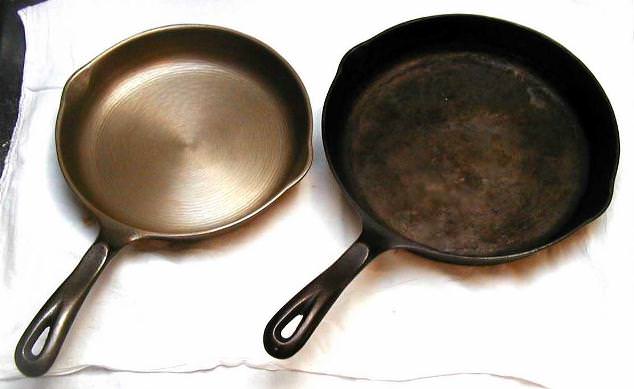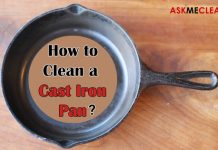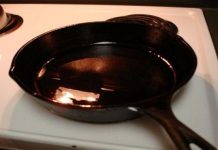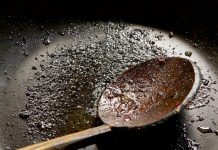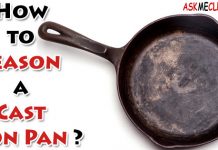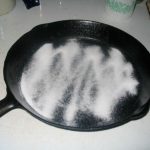Cast iron skillet is loved by everyone who is involved in cooking. It’s one of the most used kitchen appliance. It’s the ideal pan to fry up a pork chop, roast some chicken thighs or to bake a delicious lot of brownies. They’re quite simple to clean. Cast iron skillet can be easily used to cook anything if you have maintained it in a good condition by seasoning. Read the article and learn the steps to season cast iron skillet.
Steps to Season Cast Iron Skillet:
Various Steps to Season Cast Iron Skillet:
- Whenever you use your cast-iron skillet, you should clean out any left-over of food.
- Just do a quick cleaning and keep an old towel or rag near your stove solely for this purpose.
- For gritty pieces and crumbs, wash it with salt and your cloth.
- If it’s really horrible, you can try some lukewarm water, and a pinch of clear soap.
- Never put your pan in the dishwasher to clean it.
- Old-style cast-iron skillets don’t appear from the box with a coated surface that is nonstick.
- You use cooking oil to do coating the skillet and blazing it for an hour in a 350° F oven.
- It won’t take on that polished black coating, but once you parched it with towel or cloth, it will be ready to use.
- You’ll fortify the nonstick layer every time you burn the oil in the skillet, and you can rush the procedure by seasoning as frequently as you like.
- Using oil saves the iron skillet from the rust.
- Rust spreads from one part of the pan to another like virus spreads in the human body.
- Some foods especially eggs may stick to new iron skillet. Use only a few drops of little extra oil or grease until you’ve done the seasoning quite well.
- Seasoning is damaged by the acidic foods like beans, tomatoes; lemon and certain breads and should not be used until the seasoning is done well.
- Cast Iron hardly needs to go above an average heat setting when correctly pre-heated.
- But if you do cook at higher temperatures, get the cast iron skillet to temperature steadily and add oil or butter to just before adding food to avoid sticking.
- The handles of cast iron skillet get hot; use paws. Use stands to guard countertops from warm cookware.
- Maintaining the seasoning well will keep your cast iron skillet and carbon steel in a good shape, but still you may require re-seasoning your cast iron skillet at some point of time.
- If the food still sticks to the surface of iron skillet, or you see a gloomy, gray color, follow the seasoning process again.
- Rinse the cast iron skillet with hot, detergent water and a firm brush.
- It is okay to use detergent this time as you are doing the re-seasoning work of the cast iron skillet again.
- Wash and dry finally.
- Apply a very tinny, even coating of cooking oil to inside of the cast iron skillet. Don’t use too much oil as it will lead to the sticky finish.
- Use aluminum foil on the lower rack of the oven to hold any leaks.
- Set the temperature of the oven to 350 – 400 degrees F.
- Place cast iron skillet upside down on the first rack of the oven to avoid merging.
- Bake the cast iron skillet for at least an hour. After the elapsed time, switch the oven off and let the cast iron skillet to cool in the oven.
- Place the cast iron skillet open, in a dry place when cooled.
- Follow the same process if seasoning is again required.
- The flames of the stove should not cover up the sides of cast iron skillet.
- Always buy the cast iron skillet having the same size of the burner.
- Don’t put the cast iron skillet in the microwave.
- When doing the deep-frying, fill cast iron skillet only to 1/3 of capacity.

